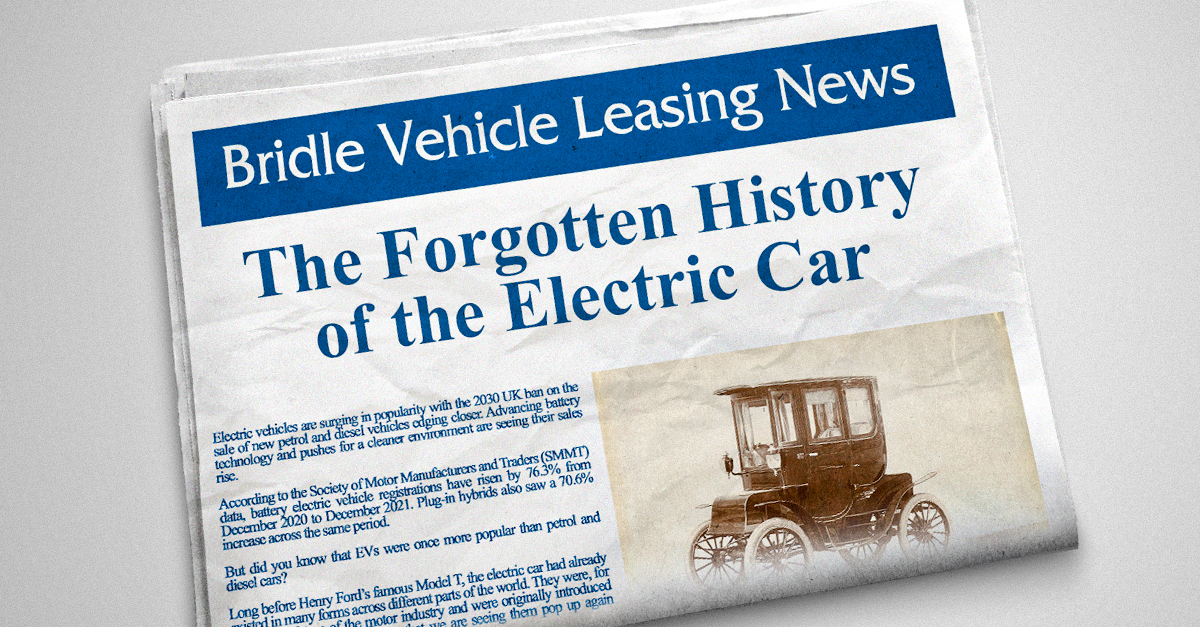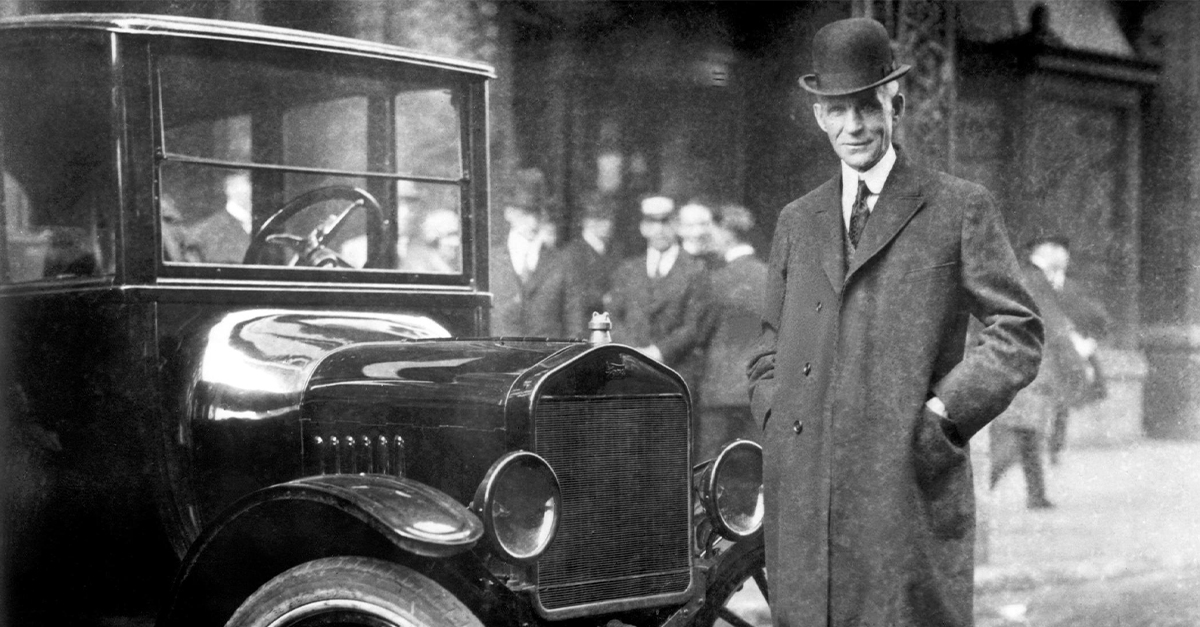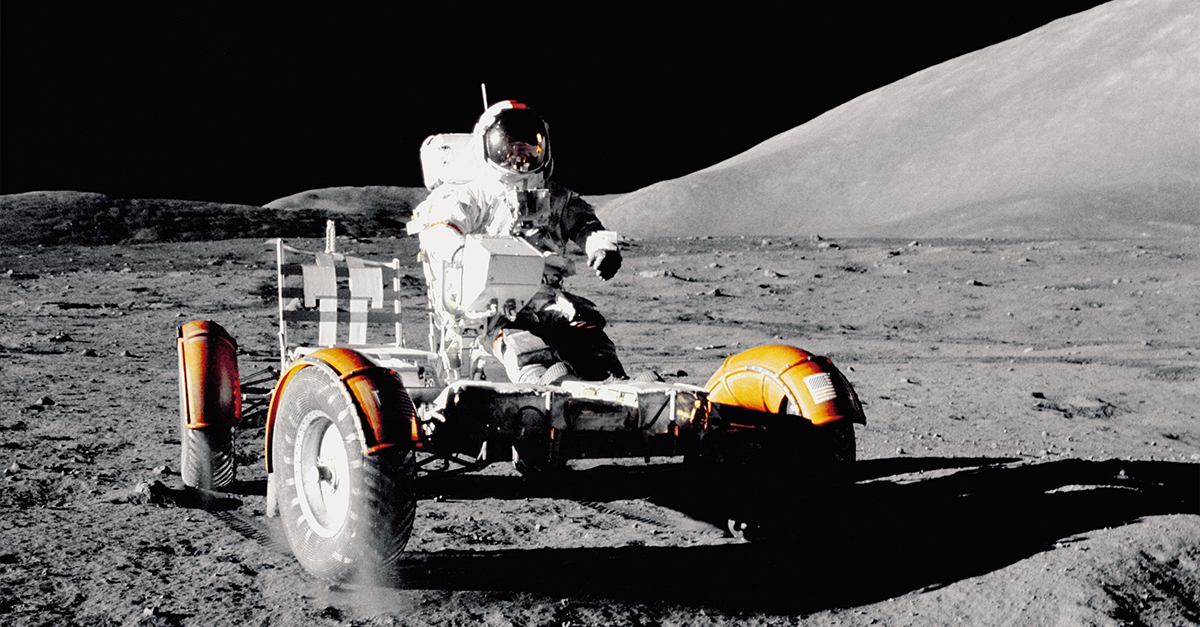The forgotten history of the electric car
On By
Electric vehicles are surging in popularity with the 2030 UK ban on the sale of new petrol and diesel vehicles edging closer. Advancing battery technology and pushes for a cleaner environment are seeing their sales rise.
According to the Society of Motor Manufacturers and Traders (SMMT) data, battery electric vehicle registrations have risen by 76.3% from December 2020 to December 2021. Plug-in hybrids also saw a 70.6% increase across the same period.
But did you know that EVs were once more popular than petrol and diesel cars?
Long before Henry Ford’s famous Model T, the electric car had already existed in many forms across different parts of the world. They were, for a time, the future of the motor industry and were originally introduced for many of the same reasons that we are seeing them pop up again today.
The horse problem
At the start of the 19th century, the horse and carriage was the primary mode of transport. Horses were cheap and outputted a lot of 'energy' for the limited amount of hay and grain that you had to feed them. Horses also provided a lot of ancillary jobs such as trainers, veterinarians, road cleaners, stable owners etc.

However, horses were also considered a dirty and polluting mode of transport and caused issues in areas where they were highly concentrated. They produced lots of manure which made built-up areas smell and dead horses in the streets allowed nasty diseases to spread.
It's estimated that around 300,000 horses were working in the streets of London and 150,000 in New York City by the 1890s. Each horse produced 10kg of manure and 1 litre of urine per day on average, which was a big task to clean up on busy city streets.
Due to these issues, there was a desire for cleaner and more convenient modes of transport.
Early electric vehicles
The gap in the market for a clean mode of transport led to the inventions of battery-powered vehicles across the globe.
The first incarnations of an electric vehicle could be seen as early as the 1830s. It’s hard to say who invented the first ‘electric car’, but early rudimentary models were designed in the US, Hungary and the Netherlands.
Inventors had started to play around with the idea of using a battery to power a carriage. A Scottish inventor named Robert Anderson had created one of the better examples of a battery-powered carriage – although it was not until later in the century that more refined models would come to surface.
Another Scotsman, called Robert Davidson, used battery technology to create a number of inventions including an electric locomotive that could travel 4mph and tow six tonnes. Sadly, the invention was destroyed by railway workers because they felt that this type of technology would threaten their jobs.
Early electric technology struggled because the batteries could not be recharged and needed replacing very frequently. However, rival steam and petrol-powered automobiles also faced their own issues at the time. These types of vehicles were still very inefficient, dirty and created a lot of pollution. Growing prosperity in the western world during this period, especially over in the United States, provided an opportunity for electric vehicles to take off.
The rise of electric vehicles
By the end of the century, following a series of electric car developments and more promising inventions, the technology and buzz around EVs had reached a point where a third of all vehicles on the road in America were electric - New York City also had its own fleet of 60 electric taxis.
Even the crude versions of the electric car were much quieter and cleaner than its rivals. They were particularly useful in urban cities, where only short distances were required and road surfaces were much flatter and more forgiving.
They found popularity with women who didn’t want the smell and the dirt associated with petrol-powered cars. Henry Ford even bought his wife an electric vehicle instead of his own Model T.
In 1897, the bestselling car in America was an electric vehicle called the Columbia Motor Carriage, created by the Pope Manufacturing Company. At the turn of the 20th century, sales of steam-powered vehicles only narrowly led electric sales.
Ferdinand Porsche, the founder of the famous German car manufacturer with the same name, had looked to advance the technology further when he invented the P1. He also went on to make the first hybrid car that could alternate between electric and petrol power.
An electric Taxi called the Electrobat was created by Pedro Salom and Henry Morris in Philadelphia. Their electric taxi service in Manhatten had around 1,000 passengers in its first month. The two men teamed up with the Electric Battery Company and developed a battery swapping depot that could fit a fully charged battery in seconds, allowing their Electrobats to be in operation for more hours during the day.
In 1899, Salom and Morris expanded their operations across America under the Electric vehicle Company (EVC) name. EVC had some very brief success but their business was poorly managed and they struggled to return profits.
The fall of electric vehicles
The golden age of electric vehicles had seemingly come to an end when Henry Ford came out with the Model T. Its introduction in 1908 was the first affordable and refined automobile that was available to the masses.

The discovery of Texas crude oil helped to drop petrol prices and allowed fuel stations to emerge across America. This was a killer blow for EVs because gasoline-powered vehicles could travel much greater distances at higher speeds and electric cars all but disappeared from the automobile market as a result.
Henry Ford had tried to develop a low-cost electric car with Thomas Edison. Edison and Ford faced issues creating a battery that was both lightweight and could provide a good driving range, so the project was later disbanded.
The mass production of the petrol car generated excitement around the ability to travel far and wide in your very own vehicle. Electric cars, with their lacking range, limited people's ability to explore and so were not the preferred option during this period.

Electric vehicles would barely get to see the light of day across the rest of the century. In fact, the most famous electric vehicle across this period would end up being the lunar rovers that were driven by American astronauts on the moon in 1969.
Toyota's hybrid Prius did, however, manage to play a significant role right at the end of the 20th century. Its success with celebrities helped to bring the idea of electric vehicles back into mainstream consciousness.
What next?
Environmental concern has once again brought electric vehicles back into fashion as they had been in the late 19th century. This time climate change is the central source of the worry as opposed to horse waste.
Technology has improved drastically over the past 20 years which has led to electric cars having much more practical battery ranges. Some of the latest models on the market have ranges that exceed 300 miles on a single charge, which is more than enough for day to day driving.
Charging infrastructure has greatly expanded too with charge points now covering the country. zap-map.com is a useful website that highlights how many electric charging stations there are currently across the UK and Ireland. The introduction of rapid charging infrastructure has also allowed EVs to get charged quicker than ever.
These factors combined with the climate emergency indicates that Electric cars are here to stay this time around, although other clean technologies are being developed. Manufacturers like Hyundai and Toyota have already created hydrogen cars like the Mirai which could potentially rival EVs sometime in the future.
If you fancy driving an electric car, we have lots of leasing offers on our website ranging from small superminis to premium SUVs.

